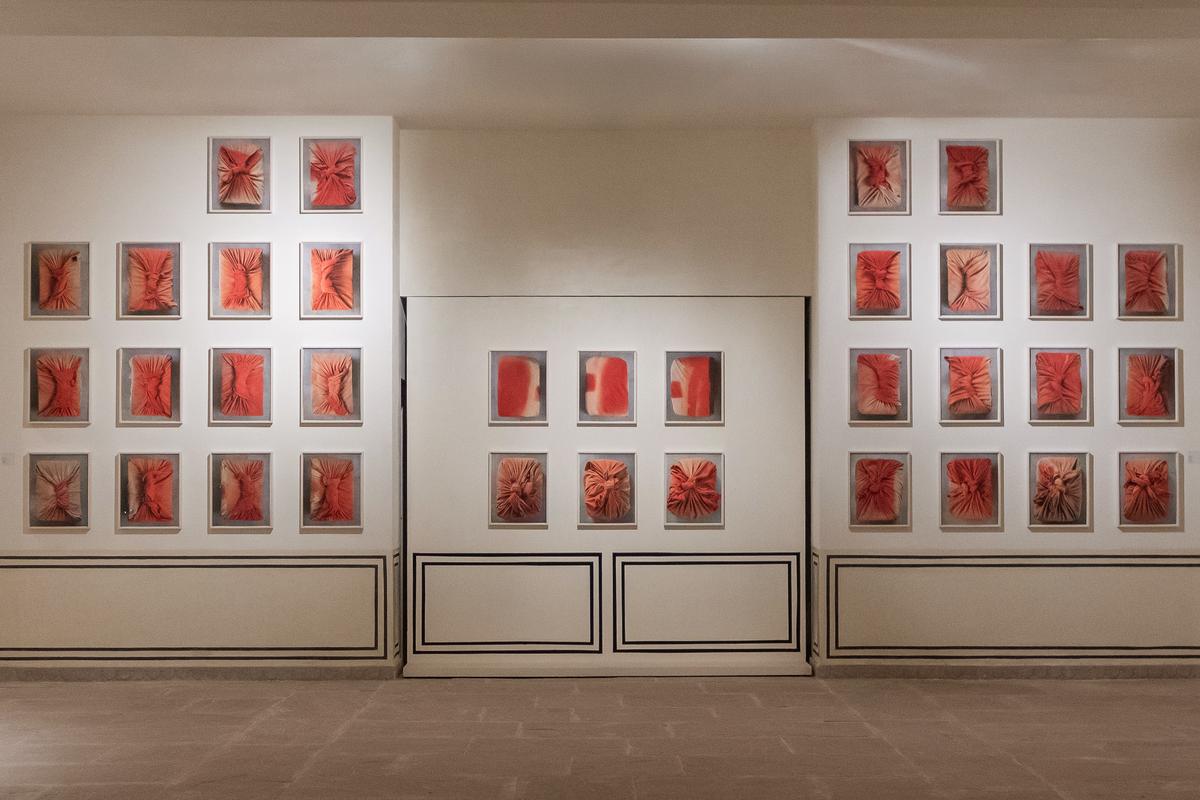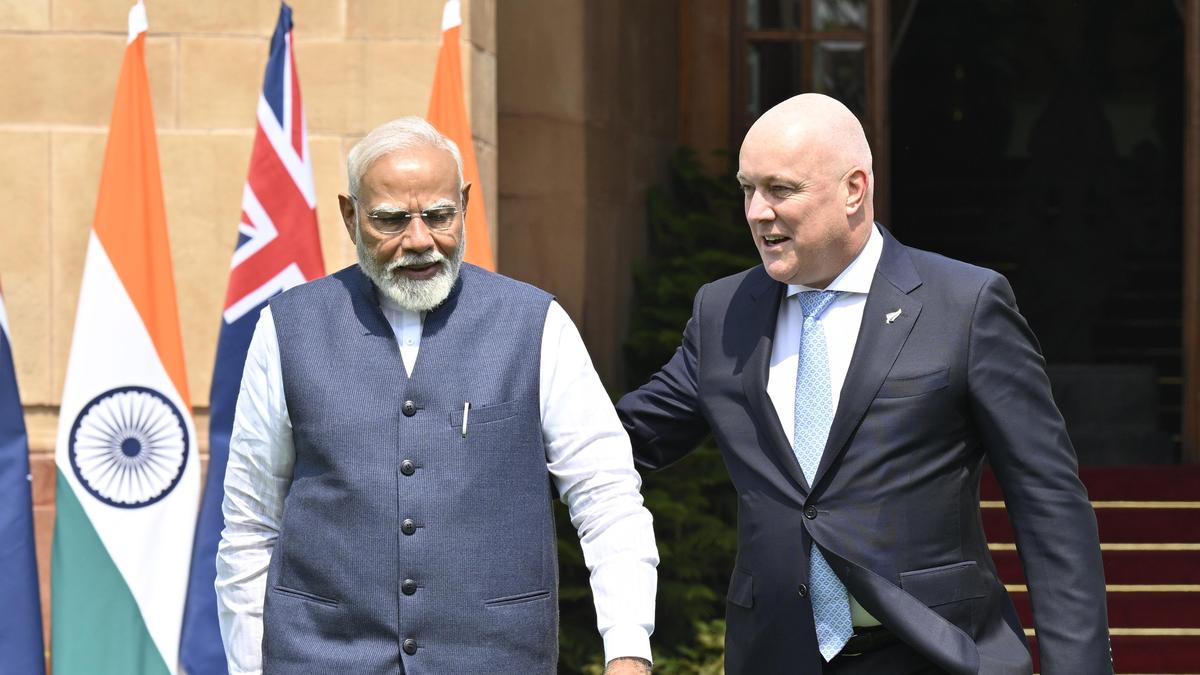I reach Dayanita Singh’s home and studio on a chilly December evening, and I am immediately greeted by hugs, coffee, and captivating prints of the veteran photographer’s works. Scattered around are miniature versions of the structures for her mobile museums.
Singh is in the midst of creating one of her biggest travelling exhibitions — six showcases in five cities — but she is calm and focused as we sip coffee. She talks about how, over the years, she has taken on the role of curator, archivist, and more recently, a photo architect, who is “collapsing time and geography” through her analogue montages mounted on compact, portable wooden installations. These have freed her of walls, and allows her to change the order of the display, defining how the works are laid out and observed.
Photo-artist Dayanita Singh
“I am engaged with what it means to disseminate an exhibition. Especially one that is as large as Dancing with my Camera [curated by Stephanie Rosenthal, it started its journey in 2022 in Gropius Bau, Berlin, and ended in May 2024 at the Museum Serralves in Porto, Portugal],” she says. The touring retrospective “was displayed in 11 galleries, which is why it made sense to have a series of exhibitions back home, spread across India”.
Singh is so engaged that she draws a diagram to show her complex plan: Museums of Tanpura at the just concluded Bengal Biennale; Museums on Tour at Kolkata’s Indian Museum, till March 31; Photo Lies at Mumbai’s Jehangir Nicholson Art Foundation, till February 23; Time Measures at the Jaipur Centre for Art, till March 16; Photo Architecture at Ahmedabad’s Kanoria Centre for Arts, from March 1 to April 27; and Mona and Myself at Vadodara’s Gallery White, from March 6 to April 30.

Time Measures at the Jaipur Centre for Art
| Photo Credit:
Lodovico Colli di Felizzano
The vast dissemination seems overwhelming, but Singh isn’t fazed. “This is what I do. My work must be taken beyond galleries where some people come just to take selfies and not really look at the work,” she says.
Pushing the ‘ photoness of photography’
Singh has never been one to settle for a single style, be it in her photography or the way she displays her work. From building sculptural installations to using her images to make books, she is constantly innovating. The thread that unites her multi-venue project now is her idea of photo architecture.
Mining her large repository that dates back to the 1980s, she is showing different configurations of an exhibition in different cities, and adding something new and specific with each iteration. “My ‘museums’ are able to change, both in their form as well as the images they hold,” she says, pointing to a model of the teak frame in her drawing room. She switches the order and images as we speak, thus changing the viewing experience instantly.
Photo Lies at Mumbai’s Jehangir Nicholson Art Foundation
| Photo Credit:
This fluidity is also evident in her architectural montages, the highlight of her exhibition Photo Lies. She picks out a display on her wall, and as I look closely I realise the beautiful black-and-white image of a well-lit interior space is actually three different locations montaged together, each angle meeting in such a manner that it creates a new location. “The first image was shot in Japan, the other in India, and the third in Sri Lanka,” she says, adding how they are a way for her to go beyond the “photoness of photography”. They are not digitally manufactured, she emphasises. “I brought all three photos together, physically cutting and pasting them myself, to create something more than what I started with.”
Dayanita Singh’s architectural montages
In an interview with Architectural Digest, she threw light on the “early epiphany” that set her on this path. While staying at the Heritance Kandalama hotel, designed by architect Geoffrey Bawa, she says she started “feeling a sense of déjà vu, though I had not been to Sri Lanka before”. She later discovered that Bawa had been inspired by the Padmanabhapuram Palace in Tamil Nadu, a place she had photographed for one of her books. This put her on the path to creating these “placeless places”.
Montages at Photo Lies
Forever chasing new forms
In the coming months, Singh’s exhibitions will morph even more. Museums of Tanpura, which disseminates her work documenting classical musicians — including Kishori tai (vocalist Kishori Amonkar) and Singh’s accordion-fold book of the icon, and the Zakir Hussain Maquette, a facsimile of the book she made as a student — will get bigger as Singh adds more works (Pillar of Pandals, Sari Museum and Indian Museum Pillar) and moves the show into the Indian Museum’s corridors.
Photo Lies, meanwhile, will split into two. One half will head to Ahmedabad, and the other to Vadodara. And on its journey there, it will transform from an ode to architecture into an ode to friendship — the celebration of Mona Ahmed (confined to montages and an installation of her desk in the Mumbai showcase) will expand into Mona and Myself, chronicling Singh’s decades-long relationship with her friend.
Singh’s Studio Box
| Photo Credit:
Even as the project and the processes impress, there is criticism too. Some say Singh has not created any new work, and is merely disseminating existing work. “It does not matter when I shot something. When I make a work and display it, I recontextualise it,” Singh responds, expressing disappointment that the critics have not understood her process. “Whether it is architectural montages, constructed contacts, and painted photos [painted over with enamel paint so they become ghost images of themselves], these are all new work. It is not just new images, but new forms that have not existed before.” Indeed. Excavating, constructing, de-constructing and re-constructing have always been at the heart of Singh’s work.
The writer is a critic-curator by day, and a visual artist by night.
Published – January 10, 2025 01:19 pm IST







